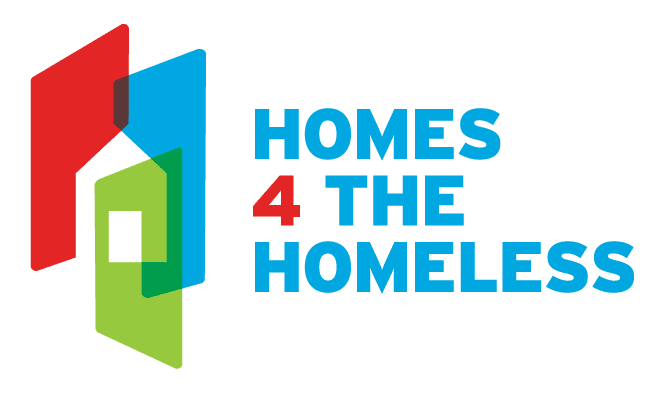After Funding Cuts, LAHSA Can No Longer Enroll New Families into Shelter or Housing Programs, Leaving Thousands Homeless
Funding cuts to homeless services and housing assistance programs in Los Angeles have resulted in resources for unhoused families in the area being totally tapped out.
A draft email designed to break the bad news to local families reads as follows:
“Due to current funding limitations in LA County’s Family Coordinated Entry System, we are unable to enroll new families in Interim housing (shelter or motel vouchers), housing navigation, or rental subsidy programs. We apologize for the inconvenience and will provide updates as they become available.”
With state and federal funding sources for homelessness services dwindling, LAHSA has been working with providers to draft an email to send to newly homeless families that both breaks the news and attempts to cushion the blow by connecting them with other existing resources in the area.
A Statement from LAHSA
A LAHSA spokesperson issued a statement on the subject of this email draft that said:
“While the family interim housing system operates at capacity, LAHSA is dedicated to ensuring every available resource is used to help families experiencing homelessness. To aid that effort, we are working with both the City and the County to draft a memo that supports providers as they guide families requesting assistance to other programs that can help them attain the assistance they require.”
Unfortunately, the most carefully worded memo in the world wouldn’t be enough to soften the blow when the message is this devastating- the institutions put in place to help you will not be able to help you when you need it most.
Budget Cuts and Layoffs Loom at LAHSA
After a year of turmoil, state funding allocated to LAHSA decreased by 71 percent, from $145.4 million last year to $88.3 million at the start of the organization’s fiscal year in July. This and other cuts reduce LAHSA’s total operational budget to $836 million this year, compared to last year’s total funding of $875 million. With numbers like that, it still sounds like you should be able to get something done, but LAHSA has warned its staff of potential layoffs coming and is now sending out signals that they won’t be taking on any new families.
Families Face Particular Challenges
Unhoused families have particular needs that can make finding housing, even temporarily, more challenging than individuals or couples. Larger units that provide enough space for everyone in a large family are more expensive, and there is a distinct lack of affordable housing options in this category. Even motel rooms have occupancy limits that can make it difficult for larger families to stay together.
Many temporary housing options are designed to house individual adults and cannot accommodate families with children at all. And shelters that can accommodate kids fill up fast, with demand only on the rise.
Programs Dwindling as Need Rises
Not only are temporary shelter spaces for families full, they’re likely to stay that way for the foreseeable future because the programs designed to transition homeless families from temporary to permanent shelter are also being scaled back.
For example, the time-limited subsidy program, which provides temporary rental subsidies for families transitioning out of shelters, is set to drop 5,000 slots over the course of the next year. A program that once accommodated 7,500 families will now be reduced to support only 2,500. This may mean that families that previously secured housing may be forced to give it up, and with temporary shelters already full, there will be nowhere else for them to go but the street.
In the midst of these changes, the estimated number of unhoused children and families in the LA region is on the rise.
Over the last year, as general homelessness numbers in LA have started to fall, the number of unhoused families has unfortunately increased. In fact, the number of unsheltered people under the age of 18 rose by 22% over the past year, and the number of unsheltered families with children saw an 18% increase. Overall, the number of homeless families with children, whether sheltered or unsheltered, went up by 6%.
We are seeing that these changes are already having very real effects, as more and more families in Los Angeles County are left unsheltered. This trend is likely to compound itself, worsening over time.
Can Measure A Help Bridge This Gap?
A new quarter-cent additional sales tax went into effect this spring after being approved by 58% of Los Angeles County voters last November. Measure A replaces the earlier Measure H quarter-cent tax increase and will effectively double the amount of additional funding the county will have on hand to pay for homelessness services and affordable housing projects. It is expected to generate revenue of more than $1 billion annually, with the average family in LA paying approximately $5 more in sales tax each month.
Measure A focuses on preventing homelessness from occurring in the first place, so just over a third of its revenue will be allocated to fund affordable housing development. Apart from that, $100 million will be distributed to each of the county’s 88 cities, which can be used to fund local programs at city leaders’ discretion. There will also be an oversight committee that will audit how all the money is spent and ensure that the service providers receiving funding meet the goals set for them.
While good things appear to be on the horizon, it will take time for this money to be collected, allocated, spent, and for the programs it funds to bear fruit. In the meantime, families are being turned away from shelters today. We can remain hopeful that the future will be brighter, but there is still a lot of work that needs to be done today. While state institutions undergo what will hopefully be a much-needed transformation, community needs will still need to be met, and for that, we can only look to one another.
